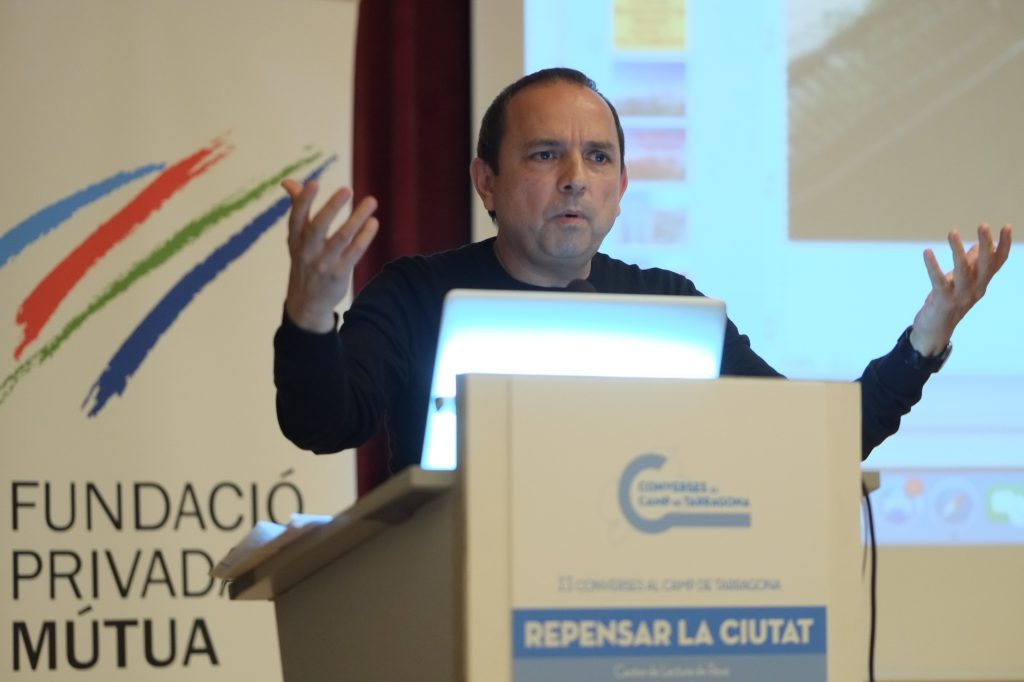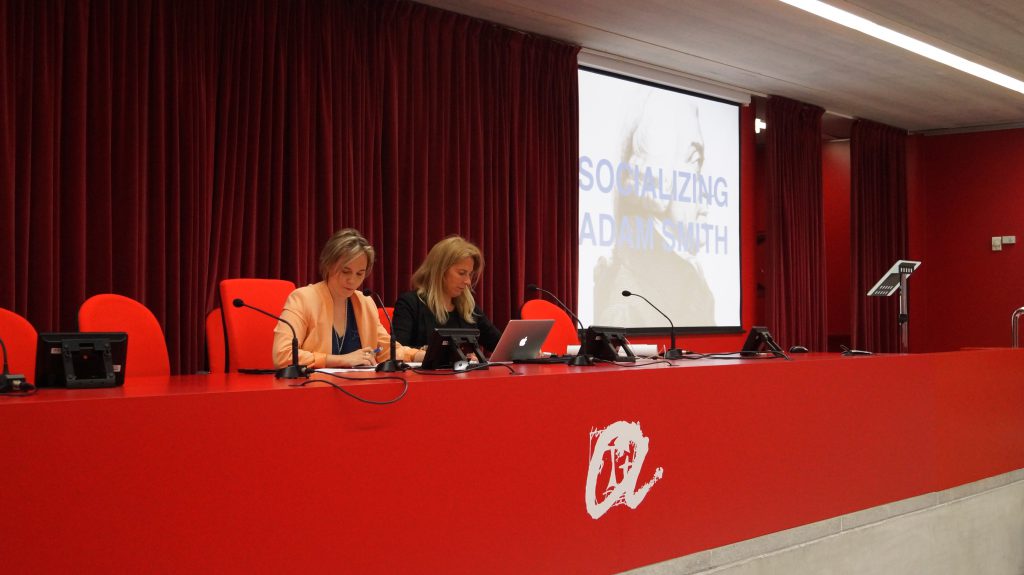24/05/2017
The architect Teddy Cruz, in a speech in Reus, calls for a more social and public urbanism to manage cities from the bottom-up
The academic from the University of California speaks at the 2nd Converses al Camp de Tarragona (Camp de Tarragona Conversations)

The academic from the University of California speaks at the 2nd Converses al Camp de Tarragona (Camp de Tarragona Conversations)
The renowned American architect, Teddy Cruz gave a speech at the Centre de Lectura in Reus in which he called for a more social and publicly funded urbanism to manage 21st century cities from the bottom up. During the inaugural lecture of the second edition of the Converses al Camp de Tarragona, he advocated an architecture that sought to counter growing inequality around the world and that was politically engaged. The organizers were the Fundació Privada Mútua Catalana (FPMC), the URV’s School of Architecture and the Tarragona Branch of the Association of Architects of Catalonia.
Using his “laboratory” work on the border between Tijuana (Mexico) and San Diego (USA), an area notorious for the wall that current US president Donald Trump wants to make even bigger, Teddy Cruz described his “local and global” project to turn “urban conflicts into creative tools for rethinking cities”. According to Cruz, “the future of urbanism depends less on buildings and more on the reconfiguration of social relations”. He carries out his research on this border in collaboration with Fonna Forman, professor of Political Sciences at the University of California in San Diego, who was also present at the Converses.
Mr Cruz called for “cross border citizens” with “common interests and values” which they shared with neighbouring communities. Citing also the recent urban projects in Bogotá and Medellin (Colombia), the architect spoke of public space as a “tool for increasing the political capacity of a city” and he advocated “bottom-up architecture in which immigrants play a key role by working with the authorities”. “We are moving towards a public and neighbourhood urbanism”, he stated before the audience of authorities and general public who had packed into the room to listen.
Mr Cruz was introduced by the head of the School of Architecture Pau de Solà-Morales, who argued that urbanists need “new ideas to solve the current problems of cities”. The event started with a speech by the president of the FPMC, Joan Josep Marca, who talked about the history of the Converses al Camp de Tarragona, which began last year to commemorate the Converses de Salou from 1964 to 1970 and to promote dialogue, debate and participation in issues facing the Camp de Tarragona region. The event also had contributions from the rector of the URV, Josep Anton Ferré, the president of the Tarragona Branch of the Association of Architects of Catalonia, Joan Tous, the Catalan Government’s representative in Tarragona, Òscar Peris, and Reus City Councillor for Culture, Montserrat Caelles.

Fonna Forman visits the Faculty of Economics and Business
Fonna Forman gave a talk on “The social side of Adam Smith” at the Faculty of Economics and Business as part of the Conversations. She is a Professor of Political Theory and Founding Director of the Center on Global Justice at the University of California, San Diego. A theorist of ethics and public culture, her work focuses on human rights at the urban scale, climate justice in cities and equitable urban development in the global south. She serves as Vice-Chair of the University of California Climate Solutions Group, and on the Global Citizenship Commission (advising UN policy on human rights).
Experiences and trends in the Camp de Tarragona
The second day of the event, 23 May, featured five groups of young architects and urbanists from the region, namely Espais ocults, NUA Arquitectes, Sopes d’all, Arquitectes Ear and the Centre de Recerca Urbana del Camp (CRUC), who gave their opinions regarding the present and future of urbanism in the Camp de Tarragona area.
The meeting began with Francesc Roig, patron of the FPMC, presenting the book containing all the presentations from the first edition of the Converses al Camp de Tarragona last year.
After that, the five local architectural groups showed a film describing their innovative work in the region and followed this with a debate which they opened up to the audience, among whom were some politicians. The CRUC showed a series of YouTube videos in which foreign tourists describe their perceptions of the Camp de Tarragona. Espais occults described their efforts to raise awareness of the Reus’ contemporary heritage through free guided tours of buildings such as the Casa Gasull in Reus conducted by volunteers with the permission of the owners.
Arquitectes Ear showed a speeded-up tour by car of the lesser known and more hidden urban spaces of the Camp de Tarragona, such as the Petrochemical Complex, railway lines, quarries and agricultural land. They also called for urbanistic interventions in these areas to dignify them and bring them closer to the public. Sopes d’all showed a series of images documenting one of their urban interventions where they introduced popular and leisure activities into a disused public space in Valls. Their aim is to rediscover these abandoned places and bring them back to the attention of the authorities so that they can be put at the service of the public again.
NUA Arquitectures explained its project to build a food bank for Càritas in the Tarragona suburb of Campclar. Their work has been internationally recognised for the sustainability and innovation of its design, materials, construction and final social use.

After the debate, the mayor of Reus, Carles Pellicer, and the president of the FPMC, Joan Josep Marca, together brought the second edition of the Converses to a close, with a commitment to repeat the event in 2018, this time in Valls.
More news about: Architecture, urbanism
